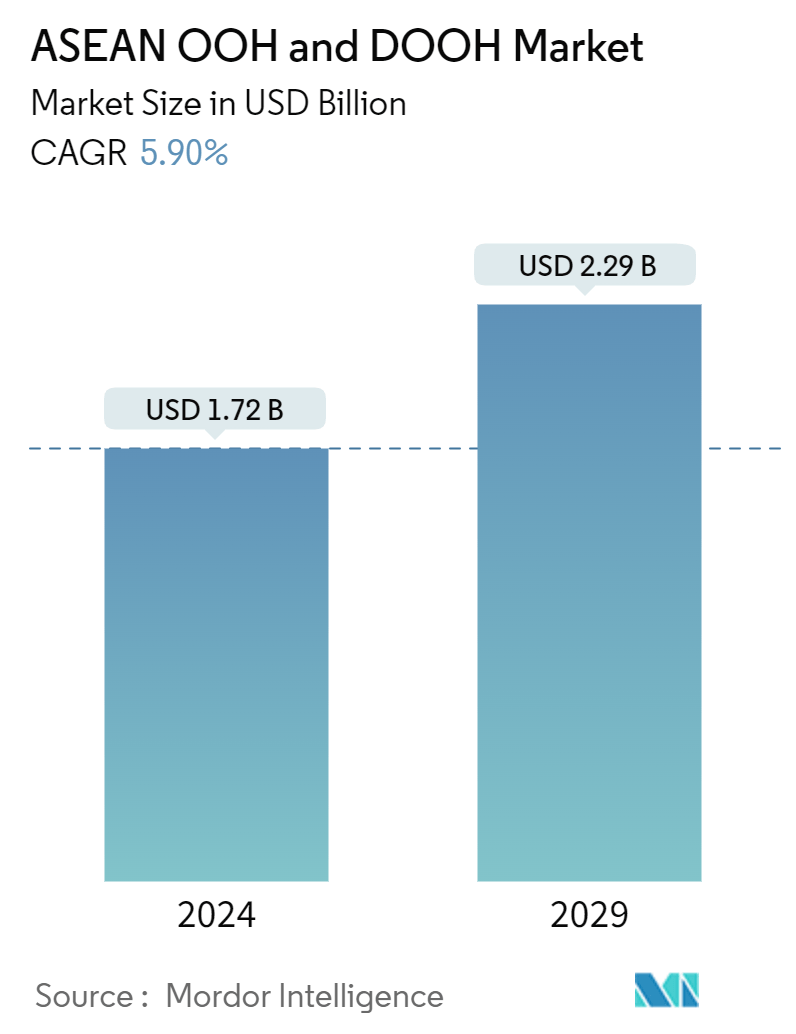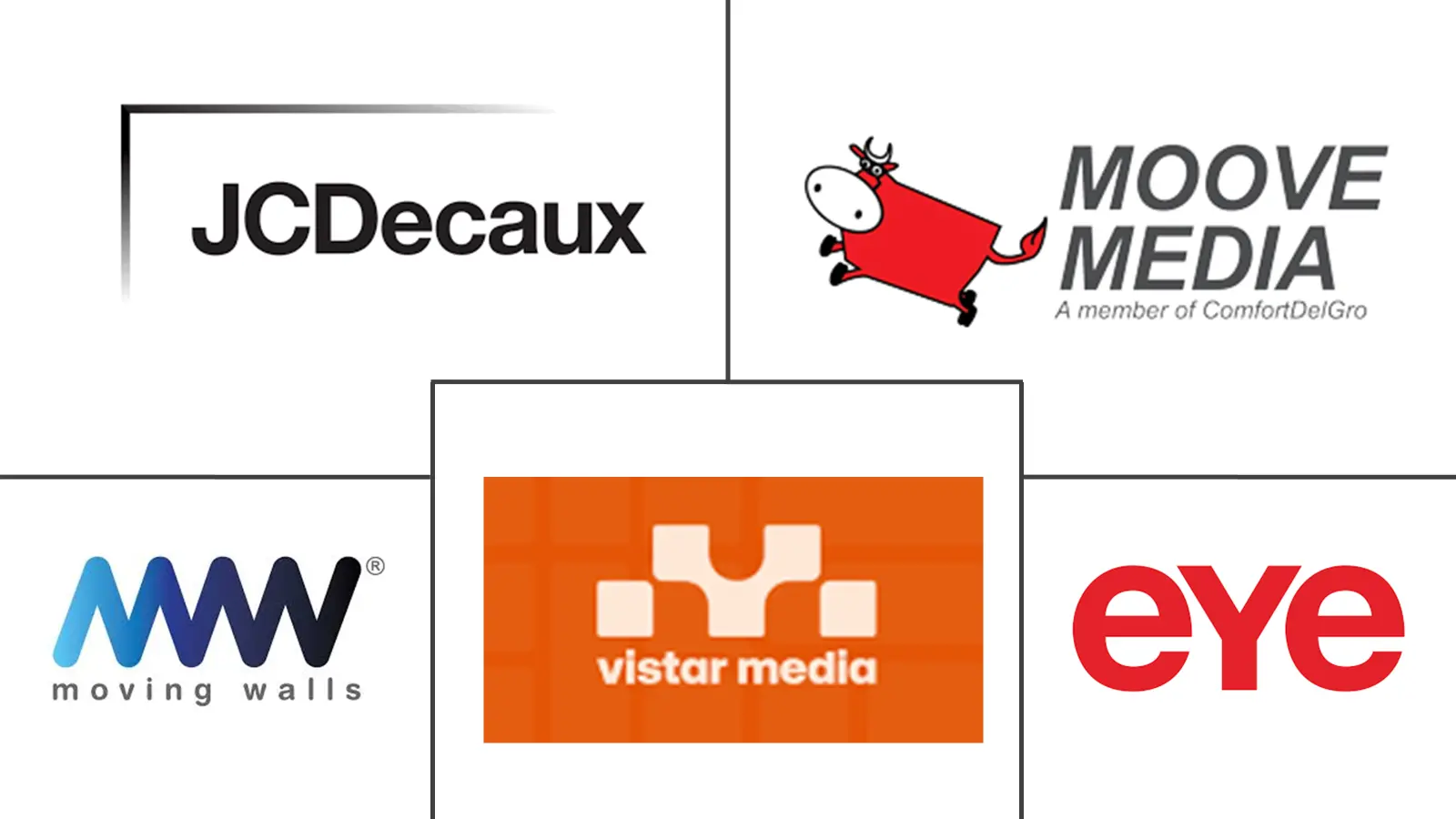Market Size of ASEAN OOH And DOOH Industry

| Study Period | 2019 - 2029 |
| Base Year For Estimation | 2023 |
| Market Size (2024) | USD 1.72 Billion |
| Market Size (2029) | USD 2.29 Billion |
| CAGR (2024 - 2029) | 5.90 % |
| Market Concentration | Low |
Major Players
*Disclaimer: Major Players sorted in no particular order |
ASEAN OOH and DOOH Market Analysis
The ASEAN OOH And DOOH Market size is estimated at USD 1.72 billion in 2024, and is expected to reach USD 2.29 billion by 2029, growing at a CAGR of 5.90% during the forecast period (2024-2029).
- Out-of-home (OOH) advertising is one of the oldest forms of advertising. Despite its legacy and numerous benefits, traditional OOH has historically faced a significant challenge: reliably measuring and proving its impact. As brand marketers and advertisers transitioned to online digital advertising, which offers granular targeting, attribution capabilities, and data-backed reporting, their expectations from advertising channels evolved.
- Smart city initiatives leverage a range of digital displays to enhance urban operations, each presenting revenue-generating possibilities via advertisements. Digital signage technology is crucial in monetizing these opportunities. From small interactive kiosks to large digital billboards, these systems provide robust computing power, high-quality graphics, and seamless connectivity. Beyond the visual impact, DOOH provides crucial analytics, empowering decision-makers with valuable insights.
- For instance, in May 2024, The US Trade and Development Agency signed a technical assistance grant with Indonesia's Nusantara Capital Authority (OIKN) to develop priority smart city infrastructure in Nusantara, Indonesia's new capital. These technologies will optimize government resources, increase sustainability, and improve the quality of life for the city's residents.
- In ASEAN, retail media is rapidly expanding, shifting brands' focus from traditional TV and online platforms to in-store placements. This shift offers brands a significant opportunity to engage with consumers in novel ways. The surge in available DOOH inventory allows brands to craft immersive advertising experiences by placing ads on screens strategically positioned within and near retail spaces.
- DOOH advertisers face a significant challenge in adapting to changing consumer behavior. Advertisers struggle to effectively reach and engage their target audiences. Additionally, it is challenging to accurately track and measure campaign performance. This includes attributing ROI to individual DOOH campaigns and gauging their influence on consumer behavior.

